


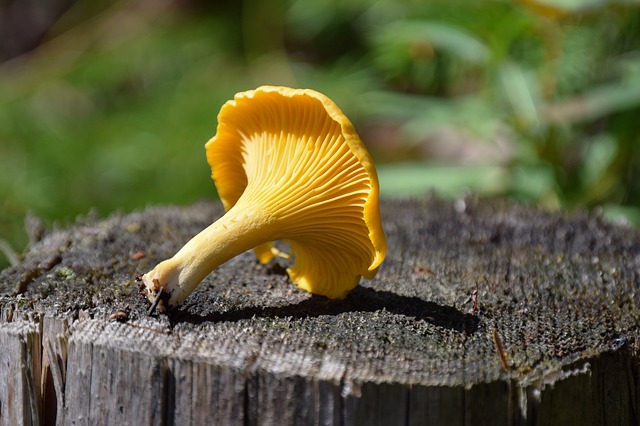
📍 North America, Central America, Europe, Asia
🌱 On the ground in mossy coniferous forests
🍄 Emits a fruity aroma, reminiscent of apricots, and often have a mildly peppery taste
🥘 Tasty
Chanterelle are among the most popular of wild edible mushrooms. They are orange, yellow or white, meaty and funnel-shaped. On the lower surface, underneath the smooth cap, Chanterelles have "false" gills that are veiny and forked. They grow scattered, but typically not in clusters, unlike Jack-o-lantern mushrooms. Many species emit a fruity aroma, reminiscent of apricots, and often have a mildly peppery taste.
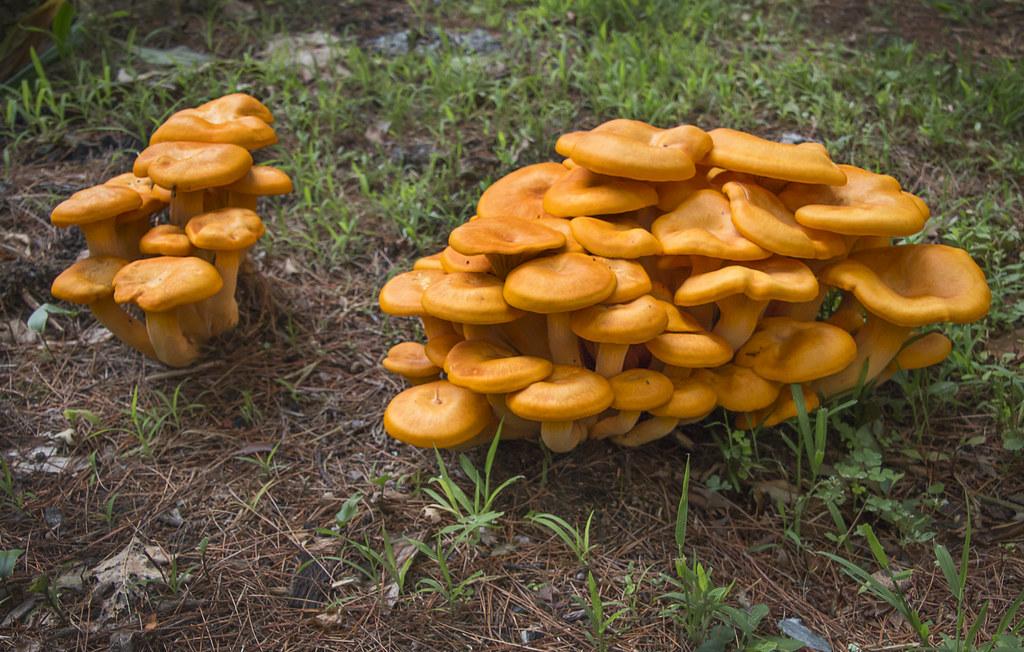
📍Europe, South Africa
🌱 Yards, On the ground in mossy coniferous forests
☠️☠️ Poisonous
✨ Bioluminescent
The jack-o'-lantern mushroom is a poisonous orange gilled mushroom that to an untrained eye appears similar to chanterelles. Unlike chanterelles, jack-o'-lanterns have true, sharp, non-forking gills; this is possibly the simplest trait for distinguishing between the two. Furthermore, if the stem is peeled, the inside is orange, while the chanterelle is paler inside the stem. It is notable for its blue-green bioluminesence, located on its gills.
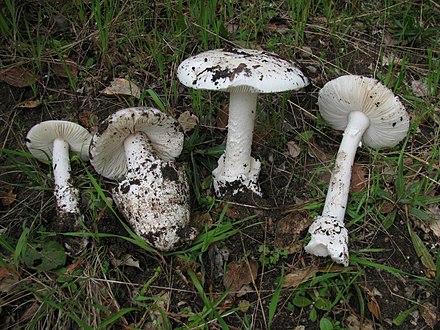
📍North America, South America, Europe
🌱 On the ground in mossy coniferous and deciduous forests
🍄 Up to 4in (10cm)
☠️☠️☠️ Poisonous
The mushroom has a smooth white cap and a stipe that has a delicate white skirt-like ring near the top. The bulbous stipe base is covered with a membranous sac-like volva. The white gills are free from attachment to the stalk and crowded closely together.
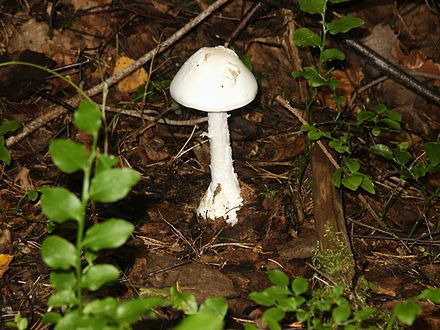
📍Europe, North America(Eastern)
🌱 On the ground in mossy coniferous and deciduous forests, summer & autumn
🍄 Up to 5in (12cm)
☠️☠️☠️ Poisonous
Amanita virosa first appears as a white egg-shaped object covered with a universal veil. As it grows, the mushroom breaks free, though there may be ragged patches of veil at the cap edges. The cap is initially conical with inturned edges, before becoming hemispherical and flattening. The cap often has a distinctive boss; it is able to be peeled and white, though the centre may be ivory in colour.

📍 North America
🌱 Recently dead, standing or fallen trees
🍄 Shelves range from 2-10 in (5 to 25 cm across).
🥘 Tasty
Also known as sulphur shelf, chicken of the woods, the chicken mushroom, or the chicken fungus because it is often described as tasting like and having a texture similar to that of chicken meat. You'll find these recently dead, standing or fallen trees, sometimes on above-ground roots.
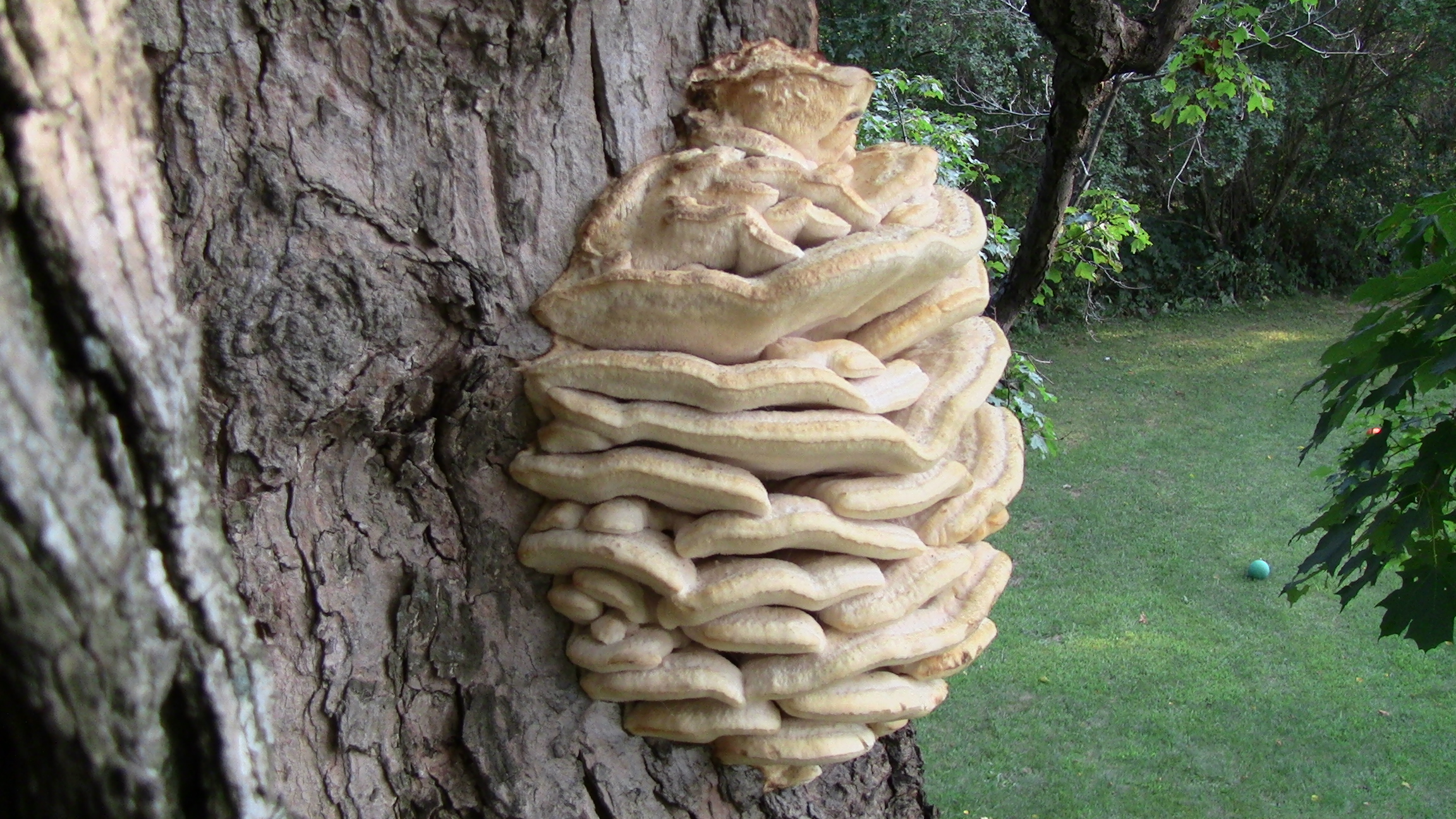
📍 Nearly Everywhere
🌱 Grows high on tree trunks, living or dead (esp. Sugarmaple)
🍄 Up to 20" tall and 10" wide, smells sour
🤢️ Edible...Technically
Northern tooth is a common and widespread fungus that grows high on the trunks of living, freshly dead, or dead trees. The upper side of this mushroom feels rough and can be hairy, while the underside has hundreds of point "teeth." Upon breaking, it leaks goo. To the untrained eye it can look like a young chicken of the woods or a cluster of oyster mushrooms, but don't let it fool you. While techically not poisonous, its tough texture and rancid odor make it inedible.
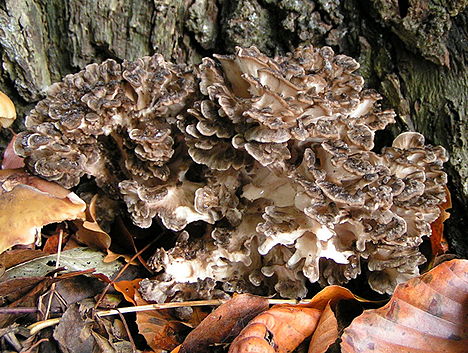
📍 North America, Europe, Japan
🌱 Grows at the base of trees, particularly oaks
🍄 Up to 40in (100cm).
🥘 Tasty
Maitake is typically found in late summer to early autumn. The fruiting body is a cluster consisting of multiple grayish-brown caps which are often curled or spoon-shaped, with wavy margins and 2–10 cm (1–4 in) broad. The milky-white stipe (stalk) has a branchy structure and becomes tough as the mushroom matures.
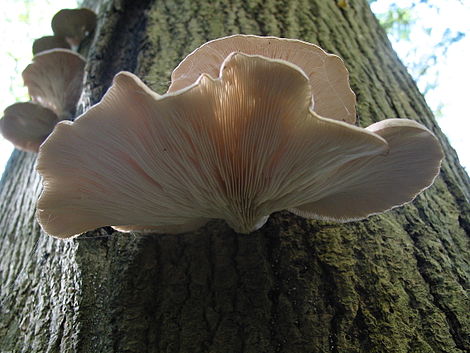
📍 North America, Europe
🌱 Dead or dying trees, especially deciduous trees and beech trees
🍄 Shelves range from 2-10 in (5 to 25 cm across).
🥘 Tasty
Oyster mushrooms are one of the few known carnivorous mushrooms. The oyster mushroom is one of the more commonly sought wild mushrooms, though it can also be cultivated on straw and other media. It has the bittersweet aroma of benzaldehyde (characteristic of bitter almonds).
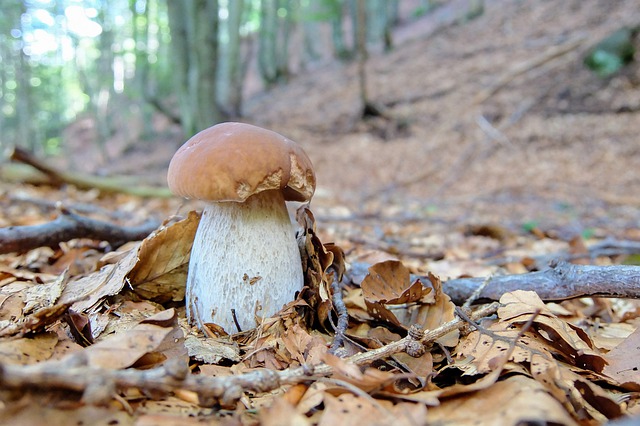
📍 North America, Europe, Asia
🌱 Forest floor of deciduous and coniferous forests
🍄 Up to 14in and 7lbs
🥘 Tasty
The Porcini (Italian for pig), or King Bolete mushroom is a stout mushroom that is prized in Italian and French cooking. Above all, it's delicious.
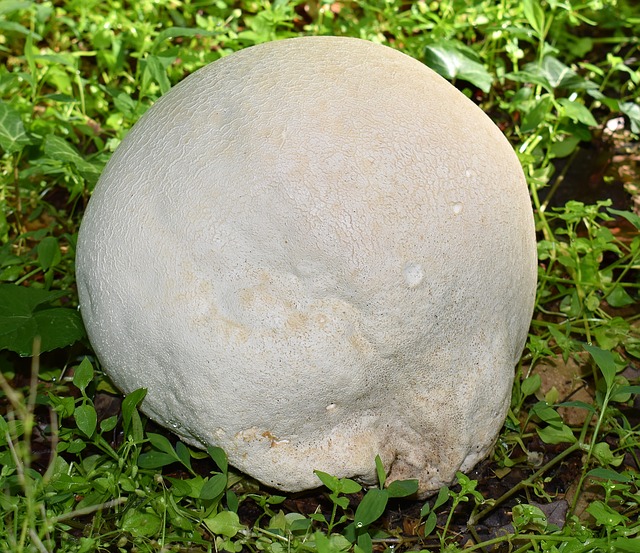
📍 North America
🌱 Gardens, Fields, Woodlands
🍄 4-20in (10-50cm)
🥘 Tasty
The Puffball mushroom can be as small as a marble, or as big as a basketball, growing from spring to fall. Puffballs are best consumed when they're younger, but can resemble deadly agarics, death cap mushrooms and destroying angel mushrooms. Real puffballs have solid white flesh on the inside. The outer skin is edible, but doesn't sit well with everyone.
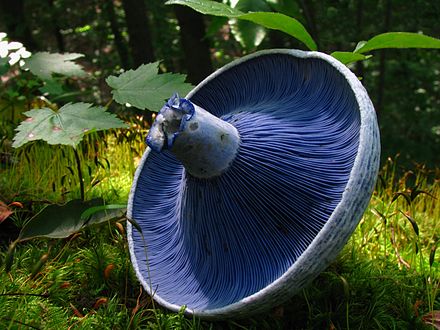
📍 North America, East Asia, Central America, France
🌱 On the ground in deciduous and coniferous forests
🍄 Cap: 2 - 6in (5 - 15cm) Stem: .8 - 3in (2 - 8cm)
🥘 Tasty
☘️ Lucky
The body color ranges from dark blue in fresh specimens to pale blue-gray in older ones. The milk that oozes when the mushroom tissue is cut—a feature common to all members of the genus Lactarius—is also indigo blue, but slowly turns green upon exposure to air. It is an edible mushroom, and is sold in rural markets in China, Guatemala, and Mexico.

📍 North America
🌱 Forest Floor
🥘 Tasty
The Lobster mushroom, contrary to its common name, is not a mushroom, but rather a parasitic fungus that grows on certain species of mushrooms, turning them a reddish orange color that resembles the outer shell of a cooked lobster. At maturity, Lobster Mushrooms thoroughly covers its host, rendering it unidentifiable. Lobster mushrooms are widely eaten and enjoyed fresh, but are available at markets in Oregon. They have a seafood-like flavor and a firm, dense texture.
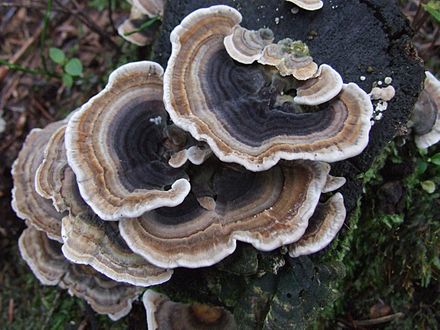
📍 Worldwide
🌱 Deciduous stumps and logs
🍄 Smooth top and underside, no stem
🤢️ Edible...Technically
Turkey Tail mushrooms are great to forage since they're available year round and nearly everywhere. Aptly named due to its resemblence to a turkey's tail, this mushroom has been known to have anti-cancer properties and is rich in antioxidants. While not considered edible due to its chewy texture, it is often used in tea or turned into powdered capsules. It's is known for having many colors, hence "versicolor", ranging from light cappuccino to red to dark brown.
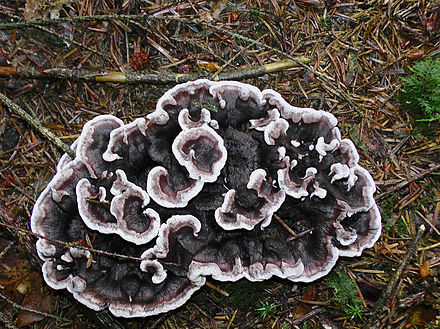
📍 North America, Europe
🌱 Forest floor or logs in coniferous and broadleaf woodlands, typically under oaks
❓ Edibility Unknown
A rather uncommon fungi, Grey Tooth is primarily a brown fungi (despite its name) found on the forest floor or on logs and branches. Its body has been described as "corky" and tough. At first glance it looks similar to Turkey tail, but the underside reveals a black stem and spiny white teeth, whereas the underside of Turkey Tail is smooth albeit a little wrinkly.

📍 Northern Hemisphere
🌱 Forest floor in deciduous and coniferous forests
🍄 Cap: 3-8in (8-20cm)
☠️☠️ Poisonous
🔮 Psychoactive
Arguably the most iconic toadstool species, the fly agaric is a large white-gilled, white-spotted, usually red mushroom, and is one of the most recognizable and widely encountered in popular culture. The Fly Agaric is thought to have been used by the Vikings in their beserker rages.
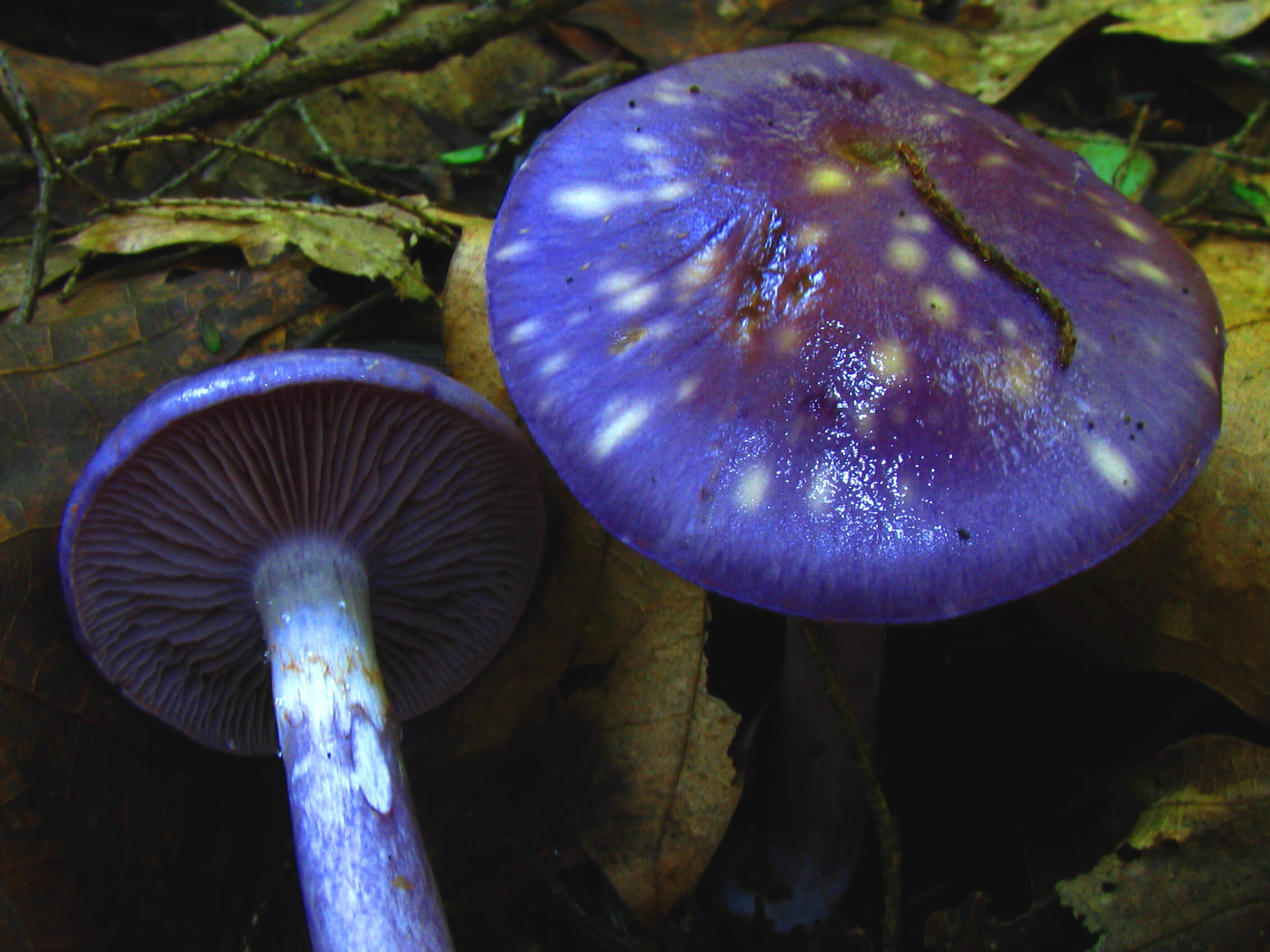
📍 North America, Central America, South America(North)
🌱 Forest floor in deciduous forests, often near Oaks
🍄 Cap: 0.8–2.4 in (2–6cm)
🤢️ Edible...Technically
Spotted Cort's cap is initially bell-shaped before becoming broadly convex and then flat in maturity. The cap surface is slimy (in wet weather) and smooth, and has a lilac or purplish color. The flesh is white, firm, and thin. The color fades in maturity, and the cap develops irregular yellowish spots, or becomes yellowish in the center. Gills are attached to the stem and packed together closely. They are lilac to violet when young, but become rusty brown when the spores mature.
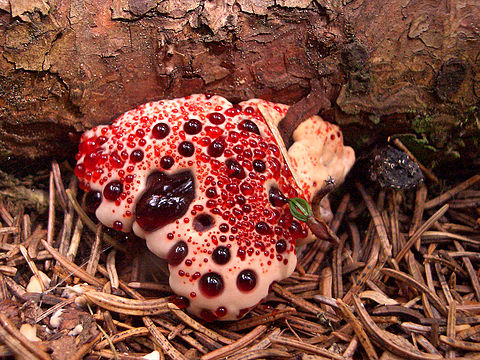
📍 North America(Esp. Pacific Northwest), Europe
🌱 Coniferous forest floor
🍄 1.6-3.9in (4-10 cm)
🤢️ Edible...Technically
Rather than pores or gills, Bleeding Tooth has as set of well...teeth(hymenium) on its underside, along with a thick, malformed stem. Fresh specimens "bleed" red fluid. They can grow solitary, scattered, or clustered together—often among pine needles and moss. While they resemble a Danish pastry with jam, they're extremely bitter, although not poisonous.
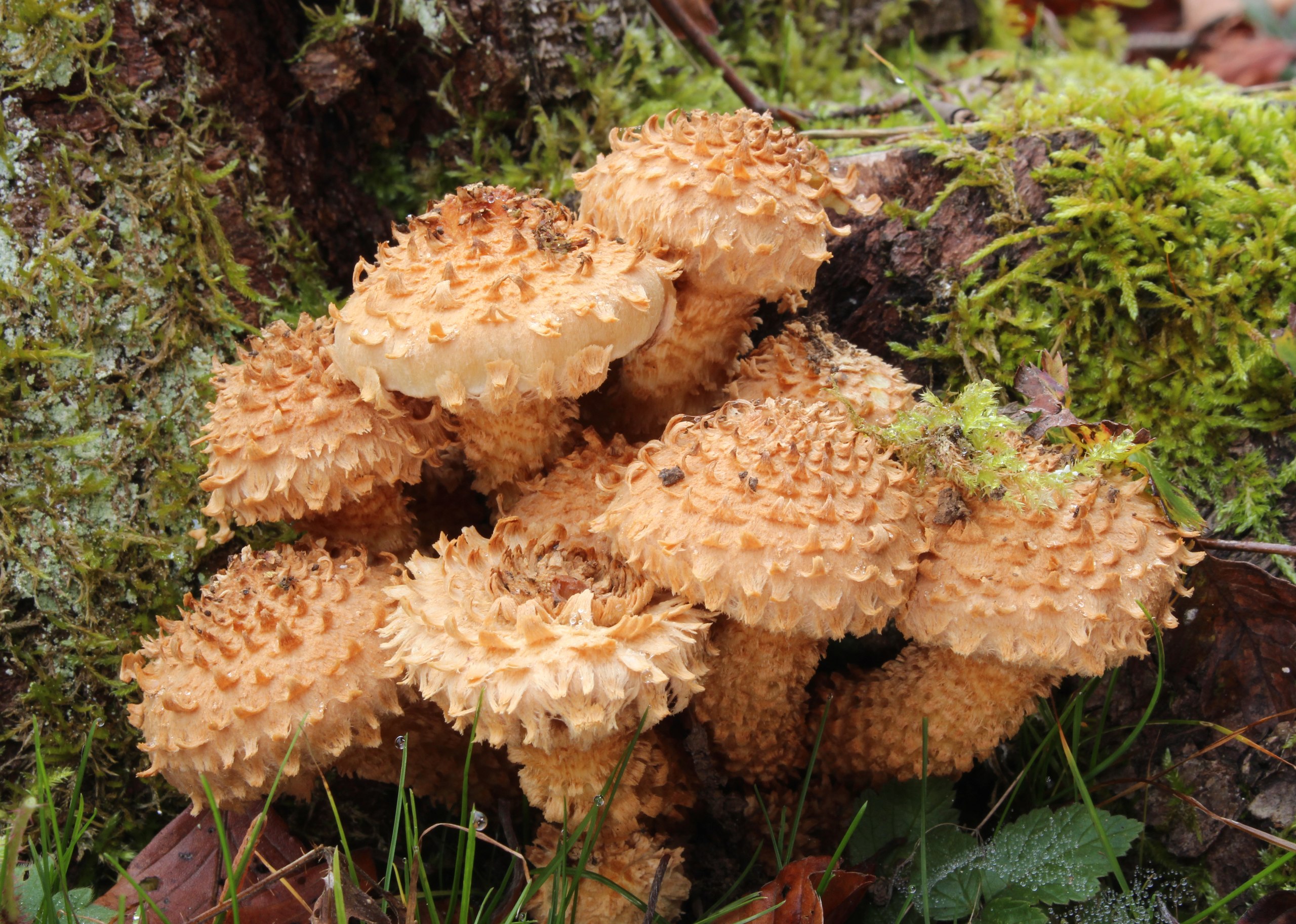
📍 North America, Europe
🌱 Base of Deciduous trees
🍄 1.2-4.7in (3-12cm)
🤢️ Edible...Technically
Shaggy Scalycap is typically found growing in clusters at the base of trees and stumps. Both the cap and the stem are covered in small, pointed scales that are pointed downward and backward. The crowded gills are yellowish, then later rust-brown. The mushroom has an odor that, depending on the author, has been described as resembling garlic, lemon, radish, onion, or skunk. It has a strong taste, resembling radishes. Though edible to some, it may be toxic, especially if consumed in combination with alcohol.
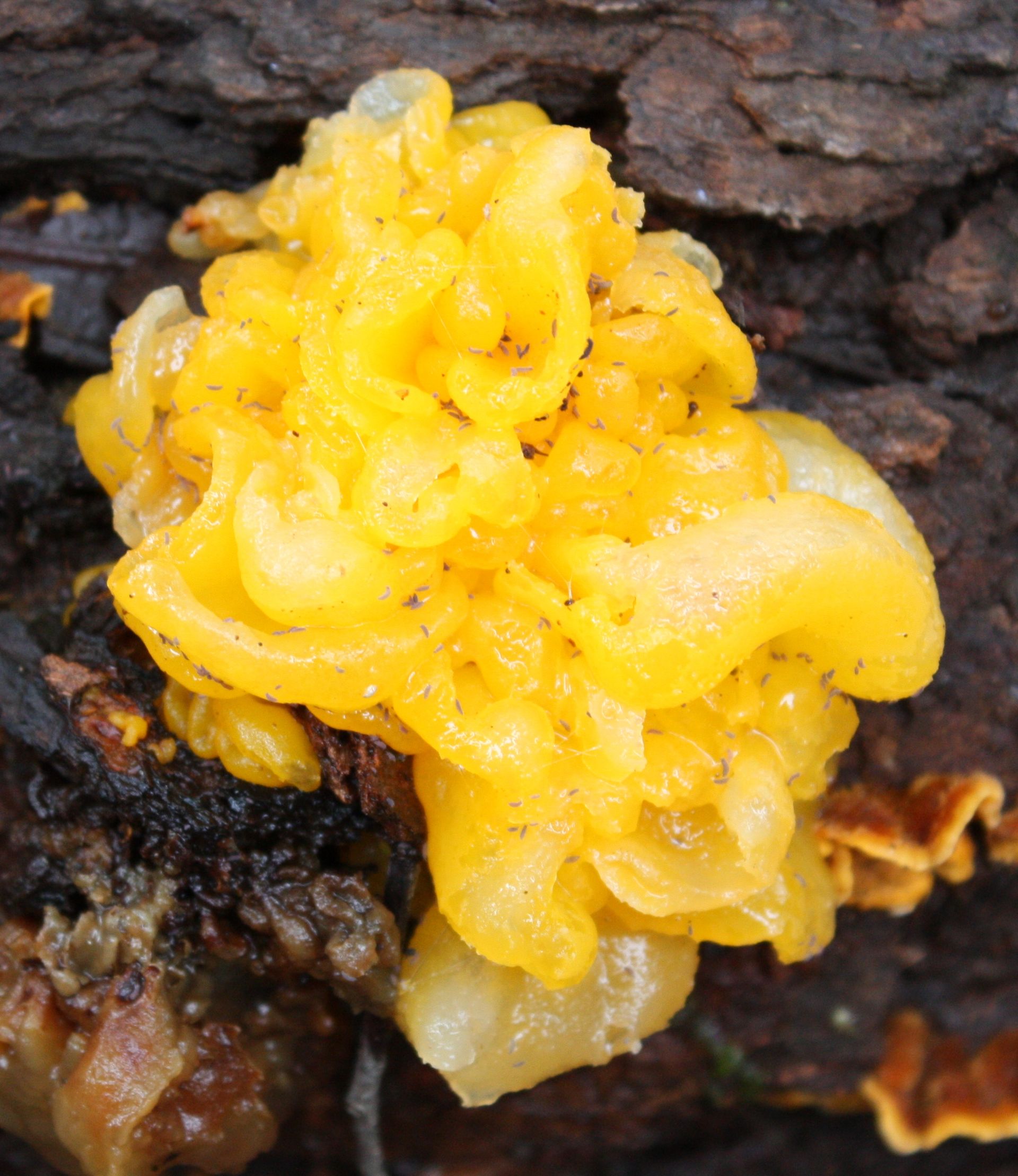
📍 North America, South America, Europe, Asia
🌱 Logs and stumps in Deciduous & Mixed Forests
🍄 Up tp 3.0in (7.5cm)
🤢️ Edible...Technically
Witches Butter is a common jelly fungus frequently found on dead but attached and on recently fallen branches. The gelatinous, orange-yellow fruit body of the fungus has a convoluted or lobed surface that is greasy or slimy when damp. It grows in crevices in bark, appearing during rainy weather. Within a few days after rain it dries into a thin film or shriveled mass capable of reviving after subsequent rain.
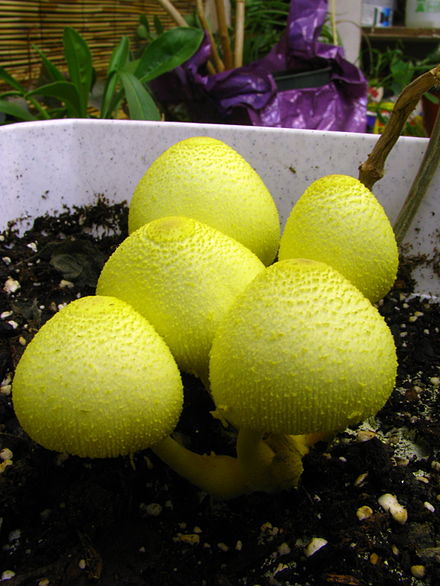
📍 North America, South America, Europe, Asia
🌱 In Flower Pots
🍄 Up tp 3.0in (7.5cm)
☠️ Poisonous (but good for plants)
The Flower Pot Parasol, or plantpot dapperling, gets its name for growing in flower pots and greenhouses. While toxic to humans, they're beneficial for your plants.
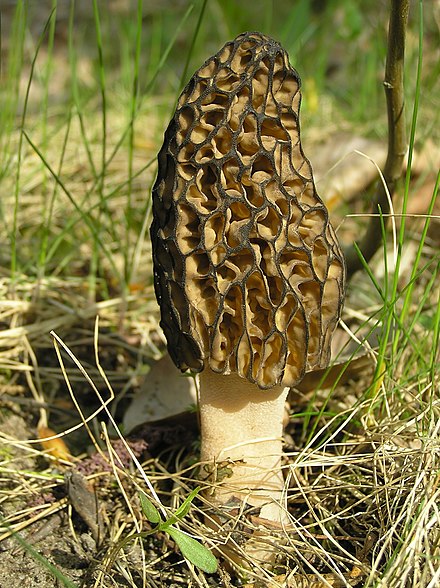
📍 North America, Europe, Indochina
🌱 Forest floor, often under fallen tree stumps
🍄 Size highly varies
🥘 Tasty
☘️ Lucky
Morels are tasty, highly-sought after wild mushrooms with a conical, honeycomb cap. Unlike other mushrooms used for culinary purposes, Morels are only foraged in the wild, as opposed to farmed. Beware of false morels, which appear to be similar on the outside but are deadly. True morels are hollow and white on the inside whereas false morels are not hollow.